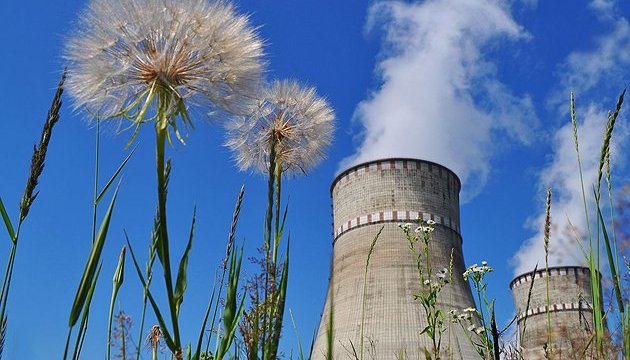УДК 618.3.621.395 • Issue 3 (31) / 2020 • 143-148 pages
Zabulonov Y.L., Charnyiy D.V., Odukalets L.A., Arkhipenko A.N., Pugach A.V., Stokolos N.A.
Zabulonov Y.L., D.Sc. (Tech.), member of corr. National Academy of Sciences of Ukraine, prof., State Institution «The Institute of Environmental Geochemistry of National Academy of Sciences of Ukraine», Zabulonov@nas.gov.ua
Charnyiy D.V., D.Sc. (Tech.), Senior Researcher, State Institution «The Institute of Environmental Geochemistry of National Academy of Sciences of Ukraine», dmitriych10@gmail.com
Odukalets L.A., Researcher, State Institution «The Institute of Environmental Geochemistry of National Academy of Sciences of Ukraine», laoduk@i.ua
Arkhipenko A.N., Jun. Res., State Institution «The Institute of Environmental Geochemistry of National Academy of Sciences of Ukraine», largha@i.ua
Pugach A.V., Jun. Res., State Institution «The Institute of Environmental Geochemistry of National Academy of Sciences of Ukraine», pav281082@gmail.com
Stokolos N.A., Jun. Res., State Institution «The Institute of Environmental Geochemistry of National Academy of Sciences of Ukraine», igns.ua@gmail.com
Abstract
As usual radioactively contaminated water in Ukraine is purified by distillation. Conditioning of the formed salt melt requires complex and expensive technological operations. Therefore, the researches of foreign scientists concerning the treatment of liquid radioactive waste are directed at minimizing the radioactive water volume. One of the most promising areas for extracting substances from liquid media is sorption technologies. Their advantages include simplicity of hardware design, low power inputs and high efficiency. The necessity of the preliminary reduction of the organic component in NPP drain water before the process of adsorption of dose-forming radionuclides is disclosed. The efficiency of oxidation of the organic constituent of these waters by means of plasma treatment is achieved when plasma is obtained by a barrier discharge on the surface of a thin layer of water. It is established that the first two energy contributions are the most effective. Owing to them the efficiency of water treatment at the first stages was about 50%, with the general efficiency 51.3%. It is revealed that further increase of energy contribution without change of external conditions is ineffective and leads to increase of concentrations of nitrogen compounds. Due to this effect, a significant increase in the concentrations of nitrogen oxides in the treated liquid initiates an increase in total COD. A regression model of COD – applied energy has been developed and directions for further intensification of these processes are outlined. To use oxygen – inert gas without nitrogen mixture or to carry out the process in an oxygen atmosphere is possible as ways to increase the efficiency of electrodischarge processing. It is also possible to neutralize the nitrogen compounds and their acids by introducing alkalis and increasing the pH of the treated solutions to 10-12.
Key words: plasma, adsorption, organics, radionuclides, discharge, barrier, COD.
Article
Reference
- Batyukhnova, O., Bergman, K, & Yefremenkov V. M. (2005), Tekhnologicheskie i organizatsionnїe aspekti obrashcheniya s radioaktivnїmi otkhodami: seriya uchebnїkh kur- sov [Technological and Organizational Aspects of Radioactive Waste Management: A Series of Training Courses], MAGAYu Vena.(in Russ.)
- Klyuchnikov, A. A., Pazukhin, M. & Shigera, Yu. M. (2005), Radioaktivnye otkhody AES i metodi obrashcheniya s nimi [Radioactive waste of nuclear power plants and methods of handling them], Institut problem bezopasnosti AS NAN Ukraini, Kiev, (in Russ)
- Dabrowski, A. (2001), “Adsorption from theory to practice”, Advances in Colloid and Interface Science, No 93, pp. 135 – 224.
- Cooney, D. O. (1999), Adsorption design for wastewater treatment, Boca Raton, Fl.
- Kostich, MirjanaM., Nesich, Jelena & Dragan, D. (2011), “Manojlovich. Decolorization of reactive textile dyes using water falling film dielectric barrier discharge”, Journal of Hazardous Materials, No 192, pp. 763 – 771.
- Jiang, Bo, Zheng, Jingtang, Qiu, Shi, Zhang, Qinhui, Yan, Zifeng & Xue, Qingzhong (2014), “Review on electrical discharge plasma technology for wastewater”, Chemical Engineering Journal, No 236, pp. 348-363.
- Grinevich, V. I., Kvitkova, E. Y., Plastinina, N. A. & Rybkin, V. V. (2011), “Application of Dielectric Barrier Discharge for Waste Water Purification”, Plasma Chem Plasma Process, No 31, pp. 573–583.
- Malik M.A. (2003), “Synergistic effect of plasmacatalyst and ozone in a pulsed corona discharge reactor on the decomposition of organic pollutants in water”, Plasma Sources Sci. Technol, No 12, pp. 526-532.
- Magureanu, Monica, Piroi, Daniela, BogdanMandache, Nicolae & Parvulescu Vasile (2008), “Decomposition of methylene blue in water using a dielectric barrier discharge: Optimization of the operating parameters”, Journal of Applied Physics, No 104, pp. 103306-1 – 103306-7.
- Sugai, Taichi; Tokuchi, Akira; Jiang, Weihua & Minamitani, Yasushi (2014), “Investigation for Optimization of an Inductive Energy Storage Circuit for Electrical Discharge Water Treatment” , IEEE Transactions on Plasma Science, Vol. 42, No 10, pp. 3101 – 3108.
